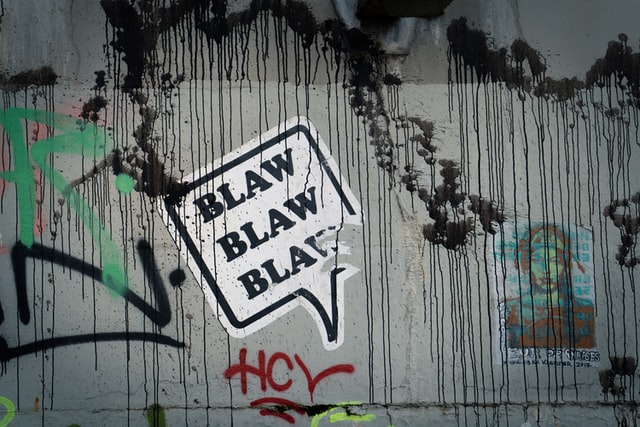For many businesses, grant funding is very appealing. It can be the driver of innovation and transformation that would not have been financially attainable without external funding. But grant applications are often daunting, full of confusion and uncertainty. The uncertainty comes from putting a lot of work into writing a grant proposal application and having no guarantee of success.
This article will certainly not claim to have the formula to ensure success, but it can help get you started in gathering and organizing the information and details that will be necessary for your application. Since there are already many how-to-write pieces focused on grant applications, this article will predominately address the major themes that recur in grant applications for most public and private funders.
1. Reading beats writing
Finding the right words to communicate your grant needs effectively is important, but the best message will fall short when disconnected from the needs of the funder. The more grant proposals you write, the more you find vast differences between application forms and questions. Therefore, the most important activity for a grant writer is to spend time reading the call for proposals and the proposal template extensively. It can save you a lot of unnecessary work if, at this stage, you find that your organisation or your project does not fit the eligibility criteria. While a good fundraising plan should minimise this risk, it never hurts to check again.

You will find certain essentials and common requirements present in most grants, and we’ll discuss how to meet these requirements in this article. Still, you’ll also find differences in how funders want this information presented. An example is the way that governmental funders require the formulation of a primary objective linked to several smaller specific objectives. This contrasts with private funders, which often require a single project objective.
2. The executive summary
While an afterthought in the literal sense of the word, the executive summary should be considered one of the most critical sections when writing a grant proposal. A good executive summary offers a short and to-the-point synopsis of what is being proposed. As the first thing a reviewer will read, the executive summary should galvanise attention by including relevant information that invites the reader to consider your proposal seriously.
Moreover, in government settings, it’s not uncommon for the first reader to be a low-ranked policy officer, an intern, or a team of reviewers, such as in the case of the EU. Your executive summary should be able to provide them with a tool with which to report back to the decision-makers, who can then decide if your proposal is worth the read.
To get started with your executive summary, make sure to include the following details:
- Problem statement: what is the issue at hand, and what is your core solution?
- Applicant information: what is your core business. In the case of a consortium, explain what entities the partnership consists of?
- Deliverables: what will the project lead to?
- Sustainable objectives: what are the project's objectives, and how will it carry on beyond the funding period?
- Financial summary: what are the project's estimated costs, and how much do you expect from the funder?
3. Your perspective on the issue
Grantmakers have their own objectives that they try to reach through funding. You are aware of their objectives at this stage and should be ready to convey your perspective on the matter. There is an effective three-step method that can guide you through the process. The first being the formulation of a problem statement, followed by your proposed solution. Lastly, you explain why your organisation/project is well-positioned to contribute.
- Problem Statement
It’s key that your problem statement gets to the point immediately. Put yourself in the shoes of the reviewer and ask yourself whether he/she will grasp the issue at hand if he/she stops reading after your first sentence. If not, you might have to formulate your message more concisely; or you may have made the common mistake of emphasizing the solution rather than the problem. An example of this is the following sentence:
“5G solutions are necessary to ensure that the European industry can keep up with technological advances”
Sure, this sentence does encapsulate a solution to a widely known problem, but problem statements cannot be based on assumptions. The problem is that “European industry is struggling to match the technological advancements of its global competitors, which threatens the industry's future”.
The message should convey a specific gap, difficulty, or obstacle that needs to be addressed. These claims can be supported by comparative (quantitative) data from up to date and reputable sources. This should then be combined with engaging (qualitative) descriptions and/or testimonies that clarify the stakes of the problem for the reader.
Follow this up by demonstrating the urgency of the need. It’s at this point that you emphasise the need for quick action by outlining possible scenarios that will play out if the problem isn’t promptly addressed.
- Proposed Solutions
Now that the reader is aware of your perspective on the problem, you should start describing a scenario in which the problem is solved. In this section, you should link the current condition with the desired result and describe the benefits of achieving this result.
- Why you?
Finally, you’ll describe your competitive advantage. You should describe the strengths of your organisation/project, highlight past performances, and outline your position in the competitive landscape. To be clear, a competitive edge can be different from case to case. Perhaps your project has found a way to be the most cost-effective or climate-efficient, or perhaps it has access to the latest innovations or is operationally effective. It’s in this section that you outline what makes your organisation/project the best positioned to achieve the desired outcomes.
4. Your approach

It’s to your benefit to linking your approach and its outcomes back to the problem statement. You may consider leveraging a chart or graphic organiser to further detail expected results, suggested indicators, targets, and timeframes. The overarching goal of your approach should be to highlight your key innovation and communicate why it’s distinct and how it meets the funder’s objectives. These claims should all be supported by metrics.
- Your key innovation
Putting aside my personal feelings about ill-defined terms such as innovation, a successful proposal relies on conveying the novelty of your project. However, do limit the use of abstract phrases such as “highly innovative,” “cutting edge,” and “unprecedented results,” particularly if a clear explanation of the novelty does not support them.
Ensure that your innovation is linked to measurable goals, and be clear about the potential benefits it looks to achieve. In the case of 5G implementation, for example, you may choose to highlight smart mobility measures in trucks and how they serve the supply chain. One overarching goal, in this case, could be to better manage the movement of in-transit inventory. Another goal may be to reduce traffic accidents involving trucks.
- Why is it distinct
Your project and its implementation should differ from what others might do or have done. You do not have to reinvent the wheel, but the combination of your key innovation, your implementation, and your deliverables should set you apart from the rest.
Detail the exact steps you plan to follow in implementing the proposed project. Each task should list a responsible party (name, title, and organization) and an anticipated completion timeline. The activities list is another great place to consider leveraging a chart or graphic organiser to convey information quickly.
- How does it meet the funder’s objectives
Ensuring that your innovation connects to the objective of the funder is another must-do. You will have read the call for proposals and all supporting documents thoroughly at the planning stage and before writing your application. That means that at this stage, it should be clear that your innovation is oriented to the funder’s objectives. In the case of the EU’s Horizon Europe grants, the call should include the header “Specific Conditions”. Review and implement the intentions of the funder in your application and convince them that through funding your project, they will further their own interests.
Additionally, in line with the trends of the past decade, outline the sustainability of the project. Demonstrate that you have a strong plan for ensuring the continued maintenance of the project through the dedication of internal resources. If the organisation intends to seek additional, supplemental grant funding for new modules, document the funders to which you intend to apply.
- Metrics to support the claims
Whether you formulate a single objective or have multiple specific objectives linked to a primary goal, you will need to follow up your objectives with specific metrics to demonstrate the high likelihood of your project’s success. For instance, if you aim to reduce traffic congestion by implementing smart mobility solutions, target a specific measure to decrease such cases by 30%. If your goal is to reduce spare part failure, consider measuring the number of Dead-On-Arrival (DOA) parts before and after implementation. The options are endless, as long as your intended goals align with the overall objectives listed in the guidance of the grant programme.
5. Budget
While the problem statement is the most critical part in writing a grant proposal application, the budget is the most difficult to create. To ensure the best result, gather the appropriate financial staff early in the process. These individuals will clarify the current fiscal situation and will also highlight any bureaucratic processes required for grant seeking. Keep in mind that every proposed line item in your grant project budget must be directly connected back to the proposed project goals and objectives. As you develop your budget, regularly check back to confirm that your request:
- Reflects a comprehensive idea that supports a project, not just products.
- Contains exact quotes from vendors.
- Includes plans for co-financing the project.
- Is free of budget errors.
Write and prosper
Perhaps a slight panic hit you when reading what to include and consider when writing a grant proposal. There are limits to everyone’s capabilities, particularly if grant writing is not your primary profession. It’s important to know your limits and when to rely on others for their support or expertise. You may have to look outside of your organization for assistance, whether you are creating an effective program assessment or drafting a grant proposal narrative. Asking for outside help from professionals dedicated to those specific tasks will ensure a level of quality that you may not be capable of or have the time to provide yourself. For example, even if you are confident in your ability to design and carry out all aspects of the project, hiring a grant writer to help put your ideas on the page can be a huge time saver and stress reliever. Whatever your choice may be, go forth and prosper.
Author Bio
“Gregory is one of the senior Grants Development Consultants at Grants Office. His area of expertise is the funding landscape in the Netherlands and the EU, with a particular focus on digitalisation processes in education and the developing labour market. As a former grant writer and fundraiser in the Lebanese, Syrian and Turkish context, he is also adept to developing compelling projects for non-profit organisations seeking European funding. His spare time is filled with as much sports as possible and he claims to be an expert on European film”
Website: https://grantsoffice.eu/
LinkedIN: https://www.linkedin.com/company/grants-office-europe-llc/



